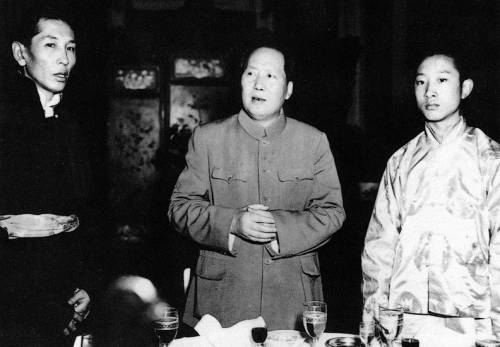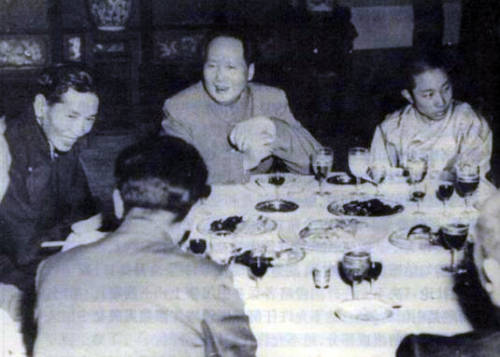
May 24, 1951, Chairman Mao held a banquet to celebrate the singing of the “Agreement on Measures for the Peaceful Liberation of Tibet” in Beijing with Ngabo Ngawang Jigme (L), the then chief representative of the Tibet local government and the 10th Panchen Lama (R).
The portrait of the late Chinese Chairman Mao Zedong, either taken between 1960s and 1970s or reprinted in recent years, is one of the frequent hanging objects in many Tibetan families. Usually the photo is hung high at the most eye-catching spot with white khada wrapped around.
Tibetans' respects and loves towards Chairman Mao has become part of their daily life as natural as the religion belief to them.
Chairman Mao had attached great importance to the development in Tibet and for a long time, he had handled with every single Tibet-related issue personally.
On major issues, he decided in person the guidelines and policies in Tibet, managed the issues in Tibet, cared people there from a proletariat politician’s perspective and mind.
It is undeniable that the shaking changes taken place in Tibet over the half century can not be possible without the central leadership headed by Chairman Mao Zedong.

Photo shows Chairman Mao in a banquet with Ngabo Ngawang Jigme and the 10th Panchen Lama.
